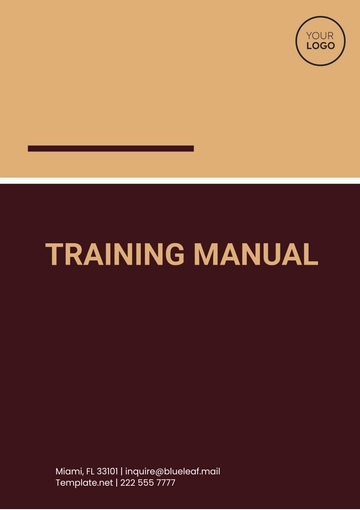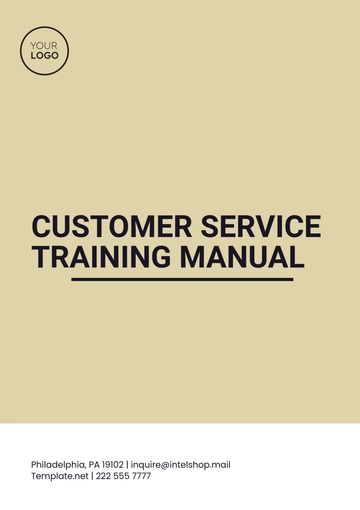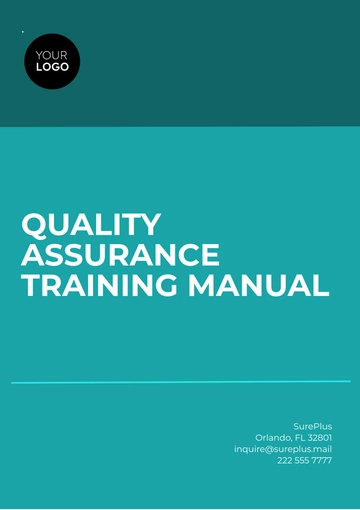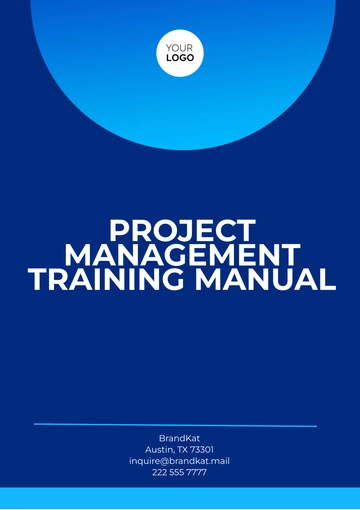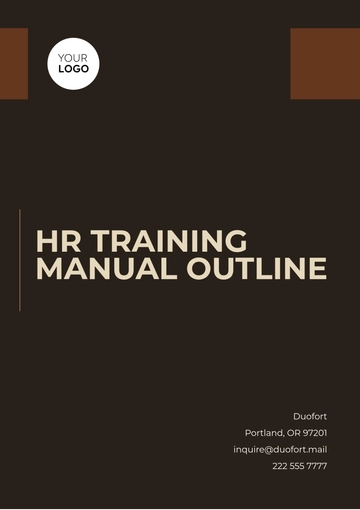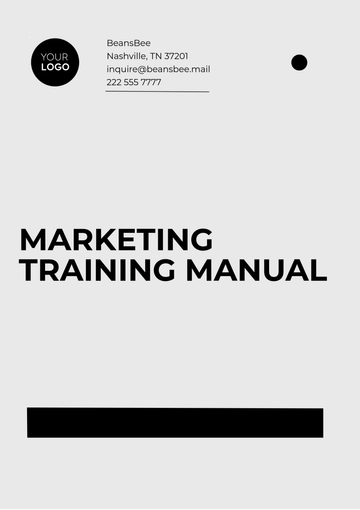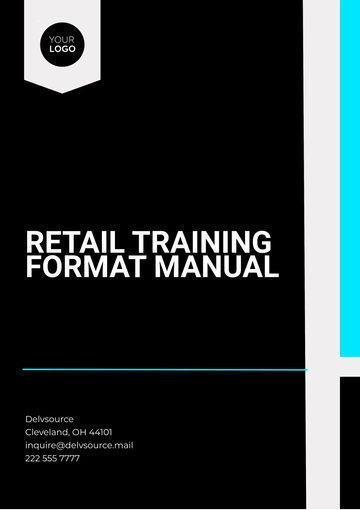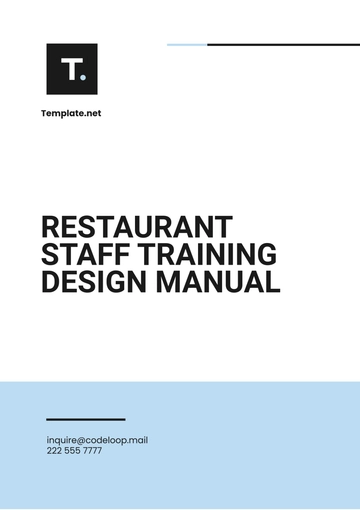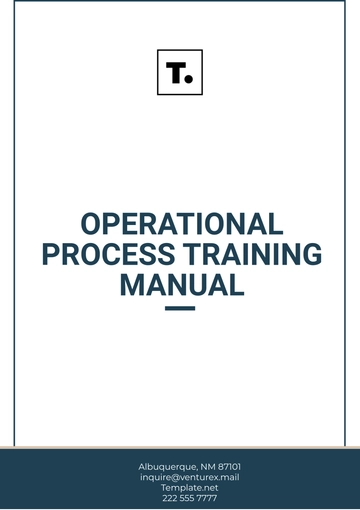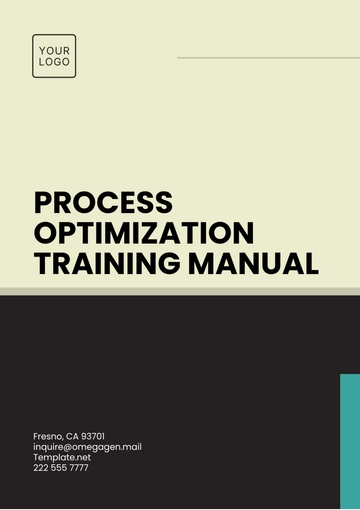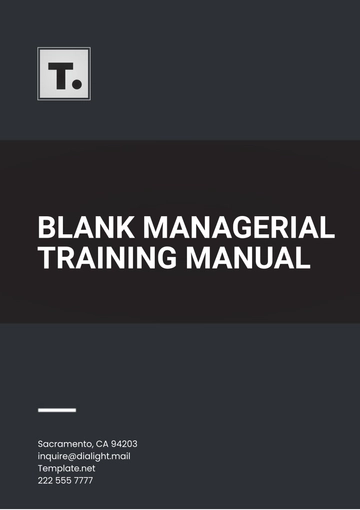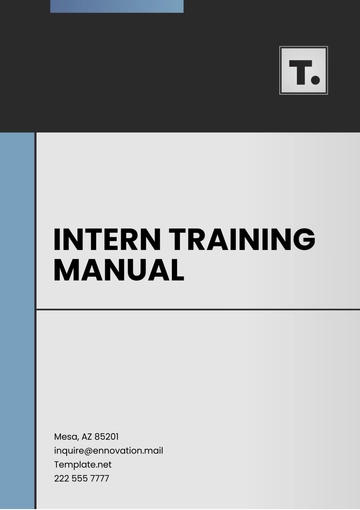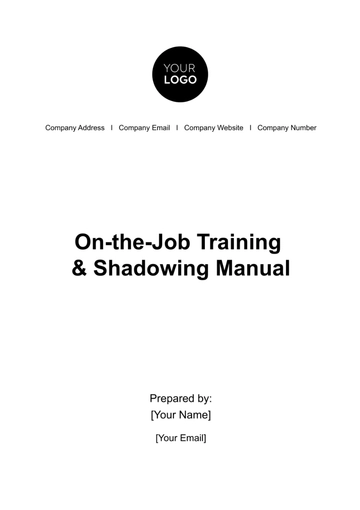Free Real Estate Green Building Training Manual
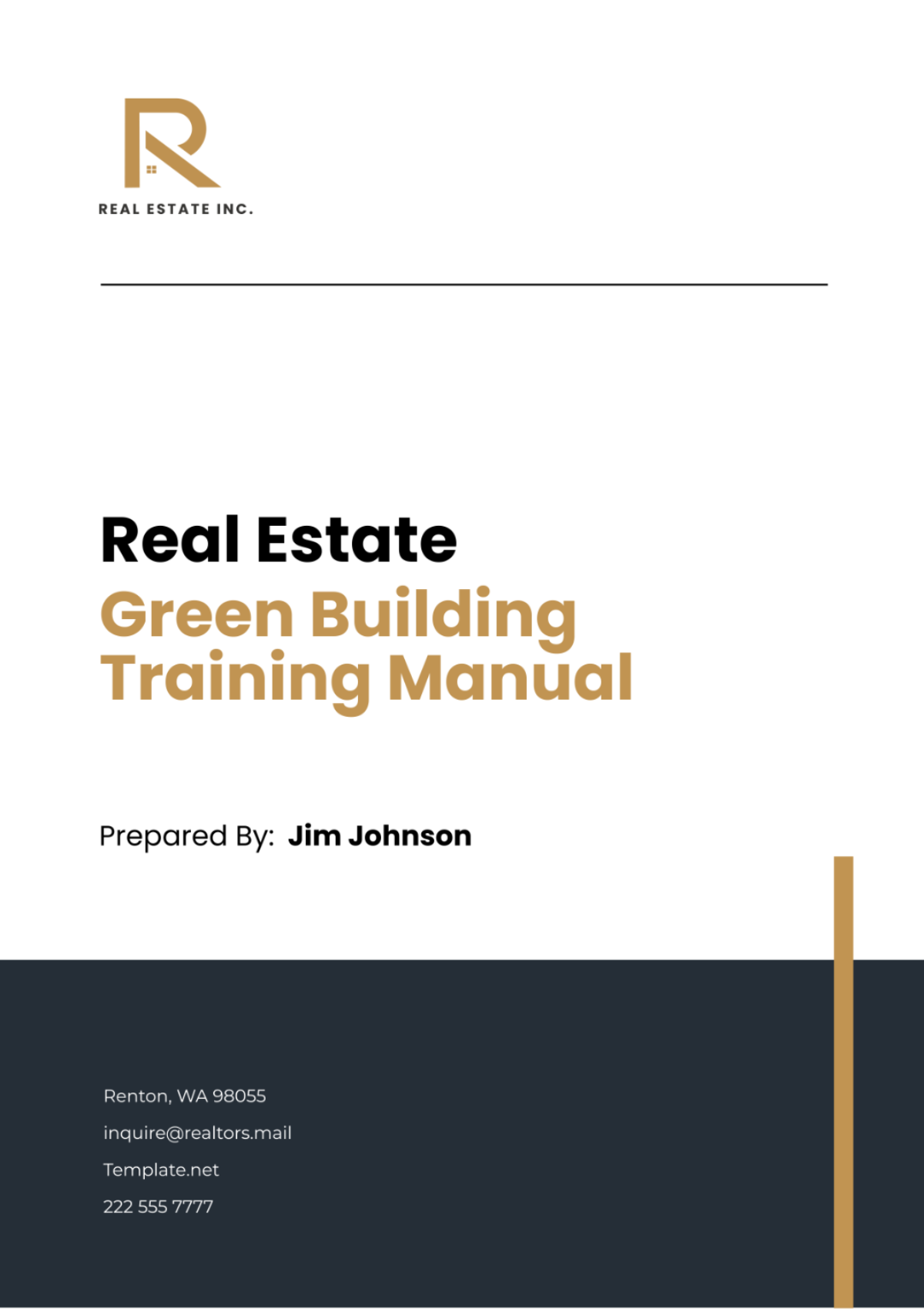
Welcome to the definitive training manual on real estate green building, proudly presented by [Your Company Name]. Our mission is to equip you with comprehensive knowledge and skills to navigate the complexities of green building successfully. This manual is designed not only as a learning tool but as a reference to encourage ongoing proficiency in sustainable real estate practices. We value your feedback on our processes and this manual. Please connect with us at [Your Company Number] or [Your Company Email].
1. Introduction to Green Building
Chapter 1: Introduction to Green Building
Welcome to the Gateway of Sustainability in Real Estate
In the inaugural chapter of our Real Estate Green Building Training Manual, we embark on an enlightening journey to understand the foundational concepts that make green building not just a practice but a global movement toward sustainability. As we stand at the precipice of environmental change, the real estate sector emerges as a pivotal player in shaping our world's future. This chapter is designed to introduce you to the critical importance of green buildings, underpinning the necessity of integrating sustainable practices within the fabric of real estate development. Through this exploration, we aim to unveil the multifaceted benefits that green buildings bring to the table, not only enriching our environment but also enhancing the financial and health aspects of the spaces we inhabit.
Objective:
Our primary goal is to demystify the concept of green building, bringing to light its significance in the contemporary landscape. By delving into this chapter, you will gain a comprehensive understanding of what constitutes a green building, its pivotal role in promoting sustainable development, and the myriad benefits it offers across the triple bottom line: people, planet, and profit.
Overview:
Definition and Significance: At the heart of green building lies the pursuit of creating structures and using processes that are environmentally responsible and resource-efficient. This section will guide you through the essence of green building, emphasizing its critical role in our journey toward a sustainable future.
Benefits: Beyond the noble cause of environmental stewardship, green buildings present a compelling case for economic and health-related advantages. Here, we explore how these structures contribute to the well-being of their occupants, ensure the efficient use of resources, and offer a viable pathway to financial savings and enhanced property value.
Navigating the Benefits of Green Building
As we unfold the layers of green building, it becomes imperative to quantitatively and qualitatively understand the benefits it brings to various stakeholders. The forthcoming table serves as a concise overview, encapsulating the essence of green building advantages across economic, environmental, and health dimensions.
Table 1: Benefits of Green Building
Benefit Type | Description |
|---|---|
Financial | Increased property value, reduced operational costs |
Environmental | Reduced carbon footprint, improved energy and water efficiency |
Health | Enhanced indoor air quality, increased occupant comfort |
2. Understanding Green Building Standards
As we delve deeper into the realm of green building, Chapter 2 of our Real Estate Green Building Training Manual brings into focus the bedrock of sustainability practices: green building standards and certifications. This chapter is dedicated to unraveling the complex yet fascinating world of benchmarks that guide the construction, design, and operation of sustainable buildings. Through a closer examination of globally recognized standards, we aim to illuminate the paths through which the real estate sector can achieve its sustainability objectives, thereby making a profound impact on environmental conservation, efficiency, and occupant well-being.
Objective: Provide an in-depth look at key green building standards and certifications.
Overview:
Key Standards: Detailed examination of LEED, Green Star, BREEAM, and their unique focus areas.
Scoring Systems: How buildings are evaluated and the impact of these ratings on sustainability and efficiency.
Table 2: Green Building Standards Overview
Standard | Focus Area | Impact |
|---|---|---|
LEED | Energy efficiency, water use, materials | Global benchmark for design, construction, and operation |
Green Star | Built environment sustainability | Promotes holistic building practices |
BREEAM | Building research, environmental assessment | World's oldest comprehensive rating system |
3. Site Selection and Analysis
Chapter 3 of our Real Estate Green Building Training Manual delves into one of the most pivotal stages in the journey towards sustainable development: Site Selection and Analysis. The foundation of any green building project is not just in its design or materials but in the very soil it stands upon. This chapter emphasizes the strategic importance of choosing a site that aligns with sustainability goals, highlighting how informed decisions at this stage can magnify the environmental, economic, and social benefits of the project.
Objective: Understand the criticality of choosing the right site for green building projects.
Overview:
Selection Criteria: Evaluation of factors such as location, accessibility, and potential for brownfield development.
Sustainability Factors: How site orientation, local climate, and landscaping can influence sustainability outcomes.
Table 3: Site Selection Criteria
Criteria | Importance |
|---|---|
Location | Proximity to public transportation, amenities |
Orientation | Maximization of natural light, energy efficiency |
Landscaping | Use of native plants, reduction of water usage |
4. Water Efficiency Strategies
In the fourth chapter of our Real Estate Green Building Training Manual, the focus shifts towards one of the most critical elements of sustainable living: water efficiency. Given the growing concerns over water scarcity and the environmental impact of excessive water use, this chapter is dedicated to exploring innovative strategies and practical solutions to ensure that green buildings are at the forefront of water conservation. Here, we delve into how adopting water-efficient practices can significantly reduce a building's water footprint, contributing to a more sustainable and environmentally friendly future.
Objective: Explore strategies to enhance water efficiency in green buildings.
Overview:
Techniques: From high-efficiency fixtures to innovative rainwater harvesting methods.
Landscaping and Irrigation: Emphasis on sustainable practices that reduce water demand.
Table 4: Water Efficiency Techniques
Technique | Application |
|---|---|
Low-flow fixtures | Bathrooms, kitchens |
Rainwater harvesting | Irrigation, non-potable uses |
Greywater recycling | Toilet flushing, landscaping |
5. Energy Efficiency Strategies
Diving into the heart of sustainable building practices, Chapter 5 of our Real Estate Green Building Training Manual illuminates the critical role of energy efficiency. In an era where the imperative to reduce energy consumption and minimize environmental impact has never been more urgent, this chapter seeks to guide you through the myriad strategies that can significantly enhance a building's energy performance. Here, we explore the synergy between advanced technology, innovative design, and sustainable practices to create buildings that are not only less reliant on non-renewable energy sources but are also healthier and more comfortable for occupants.
Objective: Highlight the role of energy efficiency in reducing a building's environmental impact.
Overview:
Key Areas: Insulation, windows, HVAC, lighting, and renewable energy sources.
Renewable Energy: Exploration of solar, wind, and geothermal options.
Table 5: Energy Efficiency Measures
Measure | Benefit |
|---|---|
Insulation | Reduced heat loss, energy savings |
Energy-efficient windows | Minimization of heat gain/loss |
Solar panels | Renewable energy generation |
6. Material and Resource Management
In Chapter 6 of our Real Estate Green Building Training Manual, the spotlight turns to the cornerstone of any construction project: the materials and resources. This chapter delves into the essence of sustainable material use and effective waste management, key aspects that significantly influence the environmental footprint of a building. By rethinking how materials are sourced, used, and disposed of, this section underscores the vital role of resource management in achieving the goals of green building. Here, we explore how the conscientious selection of materials and the implementation of waste reduction strategies can lead to more sustainable construction practices.
Objective: Emphasize the importance of sustainable material use and effective waste management.
Overview:
Sustainable Materials: Benefits of recycled, renewable, and low-impact construction materials.
Waste Management: Strategies to reduce, reuse, and recycle construction and operational waste.
Table 6: Sustainable Materials and Practices
Material/Practice | Impact |
|---|---|
Recycled content materials | Reduces demand on natural resources |
Renewable materials | Ensures long-term resource availability |
Waste management plan | Minimizes landfill contributions |
7. Indoor Environmental Quality
Chapter 7 of our Real Estate Green Building Training Manual takes a deep dive into an often overlooked yet crucial aspect of sustainable buildings: Indoor Environmental Quality (IEQ). This chapter underscores the importance of creating indoor spaces that support the health, comfort, and well-being of occupants. By addressing air quality, thermal comfort, natural lighting, and access to views, we highlight strategies that not only contribute to a building's sustainability credentials but also significantly enhance the quality of life for those within its walls.
Objective: Discuss strategies for ensuring healthy indoor environments.
Overview:
Air Quality: Importance of ventilation and low-emitting materials.
Comfort and Well-being: Thermal comfort, natural lighting, and access to views.
Table 7: Indoor Environmental Quality Strategies
Strategy | Description |
|---|---|
Proper ventilation | Reduces indoor pollutants |
Low-emitting materials | Minimizes off-gassing of harmful compounds |
Access to natural light | Improves occupant well-being |
8. Design and Construction Process
Chapter 8 of our Real Estate Green Building Training Manual navigates through the critical stages of the design and construction process for green buildings. This chapter is pivotal in illustrating how each phase, from initial planning and design to the construction and commissioning of a building, plays a vital role in embedding sustainability into the fabric of our built environment. Here, we uncover the strategies and considerations that ensure every step in the creation of a building is aligned with green building principles, ultimately contributing to a structure that is environmentally responsible, economically viable, and a healthy place to live and work.
Objective: Guide through the green building design and construction phases.
Overview:
Each phase's impact on sustainability, from planning and design to construction and commissioning.
9. Maintenance and Operations
In Chapter 9 of our Real Estate Green Building Training Manual, the focus shifts towards the crucial roles of maintenance and operations in sustaining the environmental, economic, and health benefits of green buildings. This chapter explores how ongoing management practices, rooted in sustainability, can significantly impact a building's performance over its lifecycle. By adopting energy and water-saving practices, waste reduction strategies, and green cleaning methodologies, building managers can ensure that the environmental integrity and operational efficiency of green buildings are maintained, thereby extending their life and maximizing their positive impact on occupants and the environment.
Objective: Outline effective building operation and maintenance strategies for sustainability.
Overview:
Energy and water saving practices, waste reduction, and green cleaning methodologies.
10. Continuous Improvement
The concluding chapter, Chapter 10, of our Real Estate Green Building Training Manual, emphasizes the importance of continuous improvement in the ever-evolving field of green building. As new technologies emerge and our understanding of sustainable practices deepens, the need for ongoing learning and adaptation becomes increasingly vital. This chapter encourages professionals to stay abreast of the latest advancements in green building technologies and strategies, fostering a culture of innovation and commitment to the principles of sustainability. Through continuous education and the willingness to incorporate new ideas, the real estate industry can contribute to the ongoing evolution of sustainable construction practices, driving positive change for our planet and future generations.
Objective: Encourage ongoing learning and adaptation of new green building technologies and strategies.
Overview:
Staying informed on advancements and contributing towards the evolution of sustainable construction practices.
This manual is your first step towards becoming a proficient green building professional. [Your Company Name] supports your journey toward making a meaningful impact in the real estate industry.
- 100% Customizable, free editor
- Access 1 Million+ Templates, photo’s & graphics
- Download or share as a template
- Click and replace photos, graphics, text, backgrounds
- Resize, crop, AI write & more
- Access advanced editor
Empower your team to lead the way in green building practices with Template.net's Green Building Training Manual Template. Tailored for real estate professionals committed to sustainability, this comprehensive guide equips you with essential knowledge and skills. Utilize our AI editor to customize each section, ensuring alignment with your organization's goals. Elevate expertise, foster innovation, and drive sustainable development with this invaluable resource.
